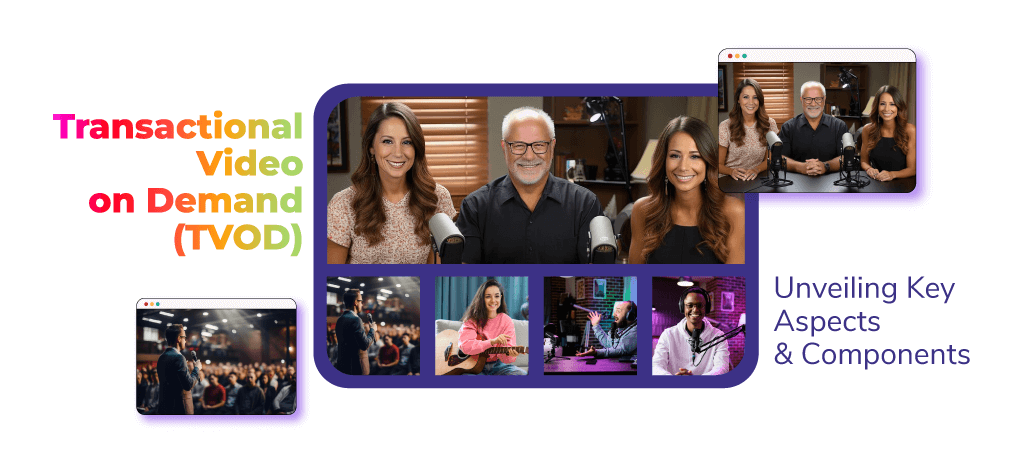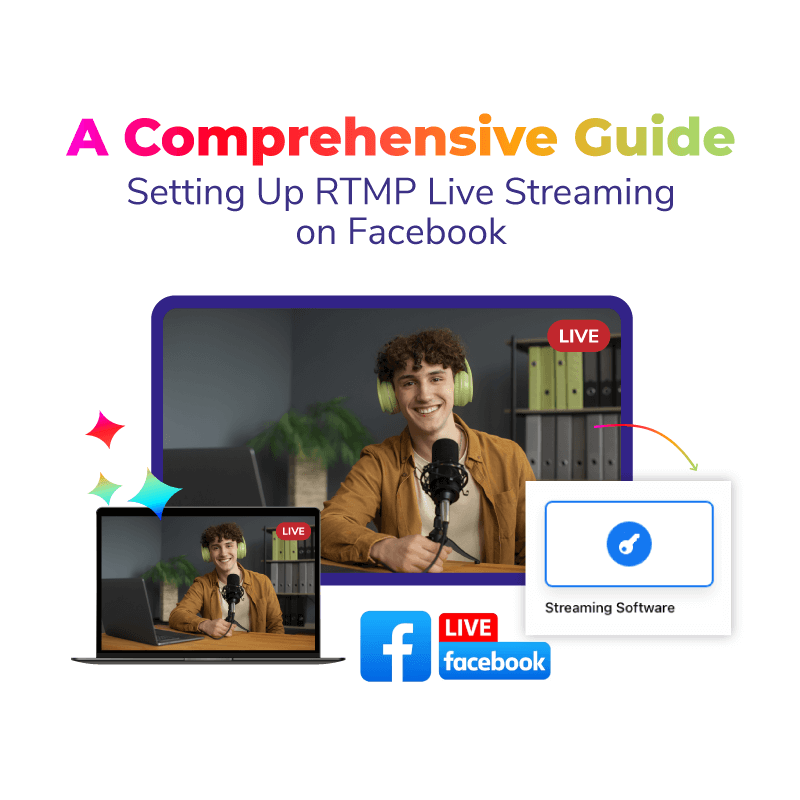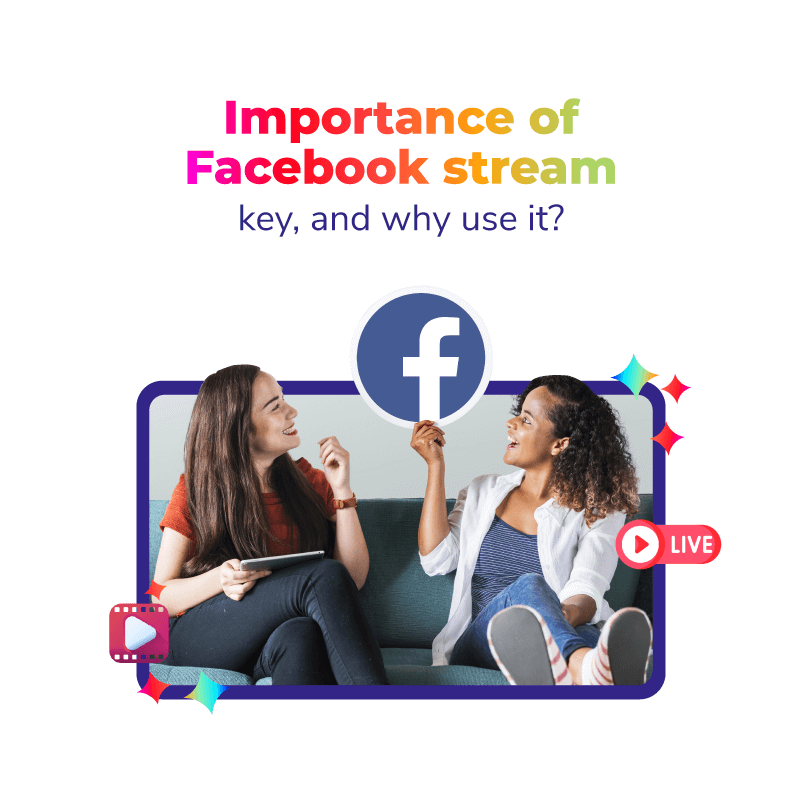In the digital era where social media and video content-sharing platforms are gaining huge popularity. The way people used to consume has not just changed drastically, but It’s found its way to pay-per-view video too. The streaming platform with their subscription models is a big industry now. According to a survey, the transactional video-on-demand (TVOD) revenue is projected to reach $8.89 billion by the year’s end and $12.89 billion by 2027. Here in this blog, we are going to explore the multi-diverse aspects of TVOD streaming, platforms, services, definition, functioning, and other key elements of it. So, without further ado, let deep delve into it, but first start with the basics;
What is Transactional Video on Demand (TVOD)?
The transactional video on demand refers to a subscription model where users pay to get access to viewing specific video content. In other words, it is also known as “pay-per-view.” The TVOD platforms offer a multi-tier payment approach from one-time to rentals to deliver a personalized and flexible streaming experience. Furthermore, TVOD streaming is like content on demand, it can be also applicable for live streaming with a ticketing system to give access to viewers for your virtual events.
Key Components of TVOD: Seamless On-Demand Video Content Viewing Experience
TVOD is simply a distribution model where viewers pay for individual pieces of video content. In the context of TVOD, key components include:
Content Library
The first is TVOD platform’s content library, which in general is a mix of specially curated pieces of content available for purchase or rental. These pieces of content can be any type of video as well as a collection of movies, TV shows, documentaries, or others.
Pricing and Payment
The next is the pricing model by the TVOD service providers. This model ranges from one-day to yearly subscriptions. Also, few TVO platforms offer rental services in which viewers can choose to pick only a single piece of video content to view for a limited period. Users typically have options for pricing, such as rental duration and quality of the content (e.g., SD, HD).
User Accounts
Nowadays with many platforms, their offers are numerous, but the common process is to create an account on the TVOD platform. This account helps in tracking the activities in terms of payments, history, and managing information.
Streaming Technology
TVOD platforms leverage streaming technology to deliver content to viewers in real-time. It means the users don’t need to download. This includes adaptive streaming to adjust video quality based on the viewer’s internet connection.
Digital Rights Management (DRM)
To protect content from unauthorized distribution, TVOD platforms employ DRM technologies. The DRM preventive measures further guarantee that only authorized users can view the purchased or rented video content.
Search and Recommendation Engine
In general, transactional video-on-demand platforms also offer a search bar and provide recommendations for users to discover relevant content based on their preferences, viewing history, and ratings. This enhances the user experience and encourages further transactions.
Geographical Restrictions
Based on the type of content, the TVOD platforms may implement geographical restrictions based on licensing agreements. This approach ensures compliance with content distribution rights and legal obligations in different regions.
Customer Support
If at any moment any users get into problems regarding their billing, technical issues, or other concerns is crucial for a TVOD platform’s success. That is why customer support is provided, which may include online help centers, live chat support, or email assistance.
Marketing and Promotions
TVOD service providers are often found engaged in marketing and promotional activities to attract users to purchase or rent content from them. This can include discounts, bundle offers, or exclusive access to certain content.
Quality of Service
Lastly, most importantly, good service is the key to retention. By ensuring a high-quality streaming experience, it can be possible. This includes minimal buffering, high-resolution video, and a reliable infrastructure to handle peak demand.
TVOD Platforms Example: A Closer Look at iTunes and Google Play
There are many real-life examples of TVOD platforms, out of which iTunes and Google Play are the top names. iTunes, launched by Apple, and Google Play, developed by Google, both platforms have significantly shaped the whole digital entertainment space globally. Now, in the current digital era, both are household names. The key features of this TVOD platform are;
- Extensive Content Libraries: iTunes and Google Play offers a plethora of video content. This includes movies, TV shows, music, and more, catering to a wide range of audiences.
- User-Friendly Interface: Undoubtedly, both platforms are highly user-friendly in terms of their functioning to interface. This key feature further contributed to a seamless browsing and purchasing experience.
- Cross-Device Accessibility: Due to its responsive interface, users can get access to multiple devices, including smartphones, tablets, computers, and smart TVs, enhancing convenience.
- High-Quality Streaming: High-quality streams are the cornerstone of both platforms, providing users with options for different resolutions. This lets the user choose based on their device and internet speed for uninterrupted streams.
- Secure Transactions: Based on the country or region, both accept standard payment options without jeopardizing any security measures for smooth transactions.
Types of Transactional Video On-demand Platforms Subscription Types
The TVOD platform is similar to the popular OTT platforms that use video monetization models. It’s like charging viewers a one-time fee to watch their desired piece of video content. However, based on different audience preferences, the service providers have categorized it into three subcategories.
- Pay-per-view (PPV): This model simply pays for a single view in a limited time frame. This is quite a common approach for sports events.
- Electronic sell-through (EST): As the name itself suggests, electronic sell-through, which refers to the permanent sale of video content for unlimited access to specific video content. For this, a one-time payment needs to be made, and it’s more popular for learning courses and movies. For instance; YouTube offers to buy movies for a lifetime.
- Download-to-rent (DTR): Viewers purchase time-limited access, typically 24 or 48 hours, for content, often employed by OTT providers.
The Uses of TVOD in Various Industries
In a diverse field and industries, TVOD services are useful. As the world is moving towards digital content consumption and more for video content. The applications of TVOD streaming are quite useful. Let’s explore a few industries;
Film Industry
We all know that films are released in cinemas only, but now after many ‘Subscription Video On-Demand (SVOD)’ models, it has changed. The theatrical releases have been seen less in numbers due to multiple OTT platforms. However, talking in context with TVODs it allows independent filmmakers to reach global audiences without the need for traditional cinema releases which cost a lot. Platforms like Vimeo On Demand and Vudu (an American digital video store and streaming service) allow filmmakers to monetize their content directly.
Education Sector
Many educational institutions to ed-tech companies are leveraging the advantages of TVOD streaming services. By curating a personalized course, instructional videos, and educational content, they are providing learning opportunities to remote learners. This includes names like; Udemy and Coursera, where you can find thousands of courses in varied fields.
Live Events
Across the globe there used to be many live events in terms of sports to music concerts and more. It is not always that each of them has been broadcast on free channels to SVOD platforms. Also, one of the reasons is that what if someone is only interested in watching just one event? That is where the transactional video-on-demand platforms come into place. For example, one of the global examples is FITE TV (a Bulgarian-based American digital video streaming service), dedicated to sports-related programs.
The list does not stop here, as every industry can take advantage using such diverse platforms or even by creating their own. Based on the diverse fields, the interface, goals, and objectives might be different, but one thing in common is the pay-per-view model.
End Note
Without any doubt, the transactional video-on-demand streaming service and platform is quite an effective technology model. With multi-diverse applications for content creators to video creators, it is wayout to earn and showcase their content to a global audience. Now, with such models as Ad-Supported Video on Demand (AVOD) platforms like YouTube where anyone can live stream their content as well as upload. The same few SVOD and TVOD platforms also offer such offerings (subject to regulatory guidelines and company policies).
But have you ever thought about how you are going to shoot that video content? Let’s say you are hosting an in-person event, and you need to record it and post it over such a platform to monetize that. Like an on-ground conference. That is where the event tech suite expert Dreamcast comes into place. We let your event be live-streamed or even recorded for all your future purposes. Get in touch by booking your free demo with us and get personalized assistance for all your queries.
Connect with the Industry's Most Experienced
Live Streaming Service Providers.




















